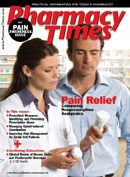Publication
Article
Pharmacy Times
The Future of Health Care and Pharmacy
Author(s):
Mr. Eckel is a professor and director of the Office of Practice Development and Education at the School of Pharmacy, UNC at Chapel Hill.
“It was the best of times; it was the worst of times; it was the age of wisdom; it was the age of foolishness;...it was the spring of hope; it was the winter of despair....” (Charles Dickens, A Tale of Two Cities)
As I write this editorial, health care reform is a major topic on everyone’s radar. Groups are taking sides to promote their position. The Pharmaceutical Care Management Association wants to “increase efficiency and save billions by allowing greater use in Medicare of home delivery for refills of long-term chronic medications,” while the Association of Community Pharmacists Congressional Network wants to “create a Medicare ‘Pharmacy-only’ Government Option Plan as a Pilot Program…that partner(s) with retail pharmacies.”
These 2 positions seem at odds, and demonstrate the problem facing Congress as they try to sort out which proposal makes the most sense. The proposals focus on where patients get their drugs, but do not seem to be as concerned about ensuring appropriate drug outcomes. I would hope that any health care reform effort would want to promote a reduction in adverse drug events and poor drug adherence, and ensure that desired outcomes are achieved. Does the way drugs are distributed to patients impact these outcomes? One might propose that better outcomes are achieved when there is a face-to-face pharmacist-patient contact. Because we do not have studies proving whether that is true, it allows us to state a position based on our conventional wisdom. Is there a potential that we can see a health care system that tries to separate the pharmaceutical care aspects of pharmacy from the drug distribution aspects of pharmacy? It seems like that could happen if pharmacy is not alert and speaking with a unified voice.
If you have a pharmacist at a prescribing site overseeing the patient’s drug therapy outcomes, does it matter where they get their medicine, as long as it is economical and convenient? Is such a model “the best of times” for the clinically-oriented pharmacist and “the worst of times” for the dispensingoriented pharmacist? You be the judge, but it suggests to me that pharmacy leaders need to be able to answer that question as the profession tries to ensure the proper place for pharmacy in a changed health care system. Pharmacy practitioners need to make their voices heard. Is it the “best of times” or the “worst of times”? I’ll leave you to answer that question for yourself, but I feel energized by the new opportunities and challenges our profession faces. I hope pharmacy leaders can count on your help to advance pharmacy in a reformed health care system that is best for the patient and thus best for the profession.







